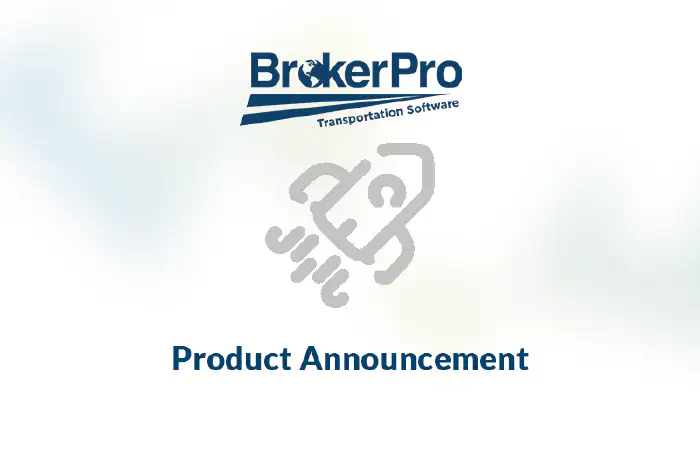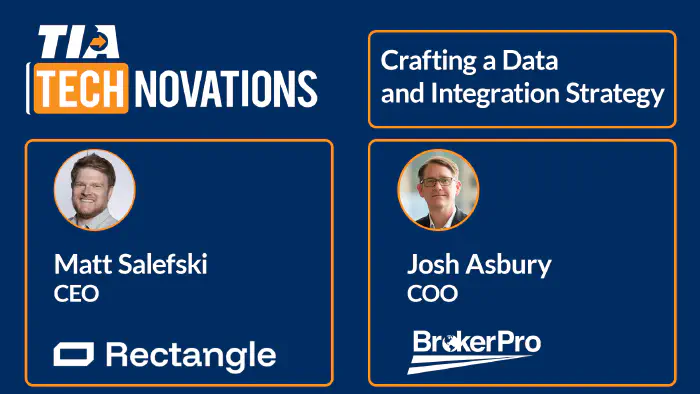November 11, 2025

The Top 5 Costs Your TMS is Hiding
- March 14, 2020
- BrokerPro Team
The Transportation Management System (TMS) is one of the most important applications in any freight broker’s technology stack. From working with carriers to invoicing your customers, it touches each aspect of your business. It’s a very complex piece of technology and as a result, it can be helpful to look at the many costs associated with it so that executives at freight brokerages can understand the total cost of ownership and begin to ascertain what the overall return on investment for their TMS is.
This article seeks to help you understand and manage the costs associated with your transportation management system.
1. Software Costs
a. License and Maintenance
Prior to the advent of software-as-a-service (SaaS), software was typically a capitalized expense for your business. You would pay a large, upfront fee to license the software, and you would, then, pay annual maintenance fees (often, around 20% of the license fee) to pay for support and minor version upgrades. Major version upgrades would require that you pay to license the new version.The thinking behind this is similar to how manufacturers purchase large-scale machinery. They would make an initial large investment in the equipment, pay the vendor an annual fee to keep it running, and once the machine reached its end of life, they would pay for a new machine.
If you are on a legacy TMS, you might still be paying according to this model. In fact, many vendors tack on additional charges for extended support of systems that have reached their end of life. These charges are there to cover their expense of supporting antiquated software and to get you to feel enough economic pain to force you to upgrade to a modern version of their TMS.
If you are paying maintenance on your TMS, it’s important to ask the following questions:
- How much is the maintenance?
- Am I paying extra for extended maintenance?
- How much will it cost to upgrade to a new version?
- Is it worth the cost to upgrade or should I consider an entirely new TMS?
b. Subscription Fees
Most vendors have moved to a subscription-based service where you don’t pay a large, upfront fee but pay based on your usage of their software. Different vendors use different methodologies to determine usage. Some base it on the number of people using the application and some use the number of transactions you run through the system.
Subscription pricing is normally much better for customers in that you don’t take an excessive financial risk upfront and won’t have to pay excessive fees to keep their software up to date like you would in a license and miniatous model.
With that said, it is important to note that you are not overpaying for seats or functionality. Go through an audit of your business to ensure you are paying for people who are actually using the system, and that you aren’t subscribing to functionality that you don’t need or no longer use.
2. Upgrade Costs
As mentioned above, many TMS vendors charge upgrade costs to allow you to use their new versions. While this practice is going away due to subscription and SaaS software, there are many freight brokers who are running on antiquated TMSs.
Even if you plan on migrating to the same vendor’s SaaS solution, they will likely change the overall pricing model and require you to pay for professional services and consulting work to migrate to this new version of the software.
To determine the cost of upgrading your TMS, you should do a 3 year cost projection to see if upgrading makes financial sense.
- Ask your vendor for a thorough Statement of Work (SOW) that articulates the overall cost, number of hours, and the length of time it will take to upgrade to the new system.
- Add in the additional annualized subscription costs to use the new version.
- Add in maintenance and support costs for year 1 since you’ll still be paying this for the duration of the upgrade.
Your TMS costs your business more than just software fees. Understanding the additional, hidden costs will help you maximize this essential business investment.
3. Customization Costs
There is no one-size-fits-all scenario for running a system as complex as a TMS and you will absolutely need to customize the software in order to accommodate your business’s unique needs. Some TMS’s are engineered to be customized easily and utilize a low-code or no-code mechanism that allows your team or a consultant to make changes quickly, easily and inexpensively.
Unfortunately, many TMS’s are archaic. Some can’t utilize modern coding mechanisms while others are hosted internally at your location or on private virtual machines that claim to be SaaS software but are actually just legacy software running in the cloud.
The cost of making customizations to your TMS is directly tied to the engineering choices your vendor has made, and you should work with someone on your technology team to understand how much or how little effort and time is required to make changes to your software.
Here are some questions to begin asking:
- Does the TMS have an open API that my team can use?
- Does code need to be written to make changes to the user interface and other key components or can those be altered via a web browser?
- What is the customization methodology of the vendor? Will changes made for me impact any of their other customers?
- If so, how can I keep our customizations private?
- If not, is this because each installation of the TMS is installed on separate infrastructure or did the vendor write the core of the application to ensure each instance and/or customization was private?
- Can my team customize the application themselves or are they dependent on the vendor to make the changes?
4. Integration Costs
Integration costs vary wildly among TMS vendors. Some charge a very large fee to integrate with other applications. This fee is necessary to cover the amount of labor required to make changes to their system because they haven’t developed the core application to be easily extendable. Integrations developed like this can be problematic because they cause instability with the core code and require ongoing maintenance and support – which they will happily bill you for on a monthly or annual basis.
Other vendors will charge a modest initial setup fee and an ongoing month-to-month fee. These fees are typically minimal and pay for things like ongoing development of the integration, supporting your needs, and paying royalties to their partners.
You should ask the following questions of your TMS vendor to understand how their integrations work:
- Do you require a statement of work to integrate with other applications?
- If so, what is the average SOW amount and project length for customers like us?
- If so, why do you need an SOW as opposed to a flat-fee? Is the integration so complex that our core TMS will become unstable – resulting in more downtime, errors, etc.?
- Do you charge any additional fees (subscription, maintenance, support) for this integration? What will my bill look like after we are live?
- Tell me about customer support. Will my team go to you or the other company for support issues? What is the process for when something isn’t working with the software?
5. Labor Costs
Labor is one of the biggest hidden costs of your TMS. Have you ever timed how long it takes your team to perform different activities inside your TMS? TMS’s are notorious for being difficult to use having bad user interfaces. They aren’t intuitive, and your team is likely spending many hours each week doing things slower than if they were using a TMS with a better user experience.
Consider this example. Say you post 1,000 loads to load boards each week, and it takes 3 minutes to post each load. That’s 3,000 minutes – or 50 hours / week. Assume you’re paying $20/hour, and you’re looking at $5,000 / month – $60,000 / year just to post loads. BrokerPro, for example, allows you to post 1,000s of loads in seconds – saving your company 10s of thousands of dollars each year.
Posting to load boards is just one example among many. It’s important for you to run time trials with your team to see how efficient or inefficient your TMS is making them.
You should begin measuring how many clicks your TMS requires to:
- Make 999 copies of a load
- Print invoices
- Send status updates to customers
- Send bid requests to 200 carriers
- Email a rate confirmation
- Calculate miles
We have created a handy spreadsheet for you to track this information with your team. Simply download it and put your TMS to the test. If you’re considering other TMS’s, ask your sales representative to show you how each of these usability indicators work so you can begin determining the real labor costs associated with your team performing their daily work.
In Summary
There are many more ways that your TMS is costing you money, and in the coming months, we will provide some more in-depth posts and link to them here. However, we hope that you have found this information useful as you work to manage your freight brokerage’s costs and increase your company’s profitability. If you have any questions or would like to discuss any of these points, we’d love to schedule a call or show you BrokerPro in action.


